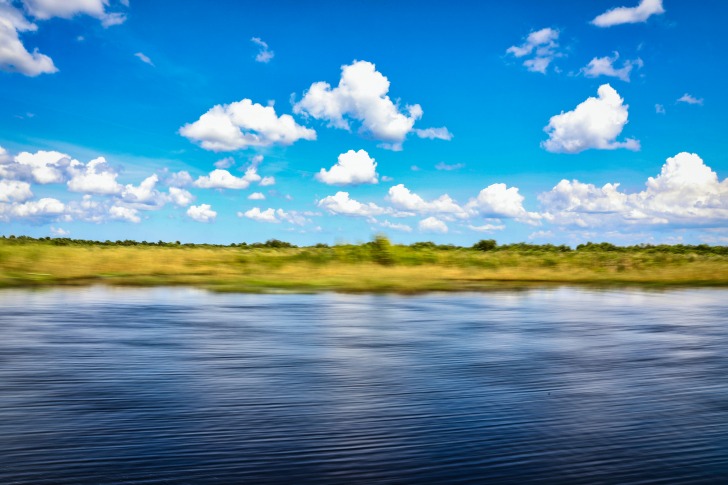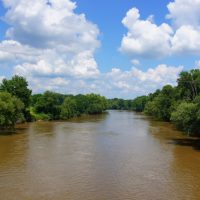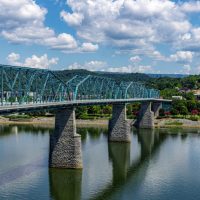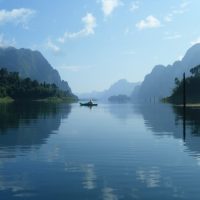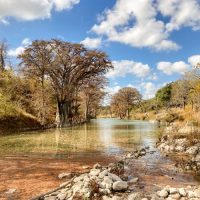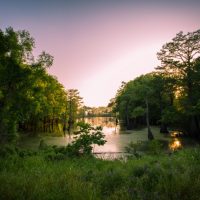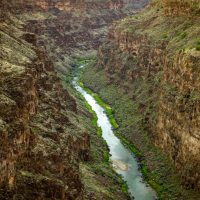St. Johns River is the longest in Florida, flowing north for 500 km from Brevard County to empty in the Atlantic Ocean.
The river meanders on its course through or bordering 12 counties in Florida.
On its course, it creates or draws water from several lakes.
It has a drainage basin of 8,840 square miles and has some of Florida’s significant wetlands.
St. Johns River has an elevation of fewer than 30 feet and a slow flow rate despite its length.
As the river flows down, leaves in its wake are habitats favored by alligators, and its biodiversity provides plenty of food for the gators.
Contents
- Are There Alligators In St. Johns River?
- Alligator Species in St Johns River
- Is It Safe To Swim In St. Johns River?
- Swimming Holes along St Johns River
- Interesting Alligator Facts in St Johns River
- Alligators vs. Crocodiles
- 5 Safety Tips for Swimming in Alligator-Infested Waters
- Summary
- Frequently Asked Questions
Are There Alligators In St. Johns River?
The short answer is yes. St. Johns River is a haven for alligators; the marshes, lakes, and slow-moving fresh waters attract the reptiles.
The river provides its home to other aquatic animals.
The land and vegetation neighboring the river are also home to plenty and a variety of birds, reptiles, mammals, and invertebrates.
It’s common to see alligators on different sections of the river.
It’s not uncommon for these carnivorous reptiles to wander from the river and invade private pods and pools.
There are plenty of areas you can visit along the St Johns course to see an alligator.
The best time to see alligators on St. Johns River is in spring during their mating season and when warm weather brings them out to bask on the banks.
Alligators are seen best when basking, and you should never approach the animal.
According to state biologists, alligators are present in 67 counties and can be found anywhere there is standing water.
Alligators are a common sight on the banks of the St. Johns River and its tributaries.
There are cases of alligators invading golf course water hazards, retention ponds, and on some occasions, swimming pools or yards near homes.
Alligators play a significant role in the ecosystem, but we should regard them with caution and respect.
Incidents of human attacks by an alligator are rare in Florida.
However, it would help if you were cautious around the river.
St. Johns River is also home to Manatees, marine mammals residing in Florida.
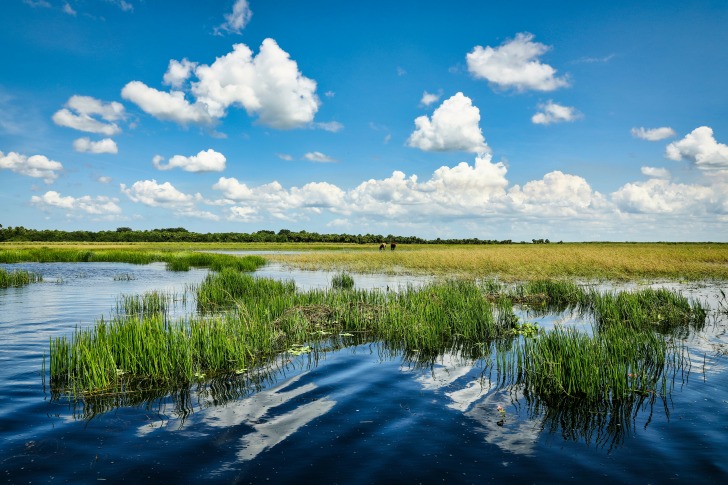
Alligator Species in St Johns River
The prominent species of alligator in St. Johns River and Florida State are the American Alligator (America Mississipiensis).
The species belongs to the alligator family in the order of crocodilians.
Is It Safe To Swim In St. Johns River?
According to the State of The River Report, some sections of St. Johns River are not safe for swimming.
Some creeks flowing into the river have high levels of pollutants consisting of metals, pesticides, human waste, and other materials that can cause sickness in man.
The report highlights the following creeks as impaired due to their levels of pollutants or the present pathogens under current laws.
- Cedar River
- Dunn Creek
- Goodbys Creek
- Julington Creek
- Moncrief Creek
- Moncrief Creek
- Ortega River
- Potts Burg Creek
- Trout River
Some areas in St. Johns River have algae blooms.
It would be best if you avoided swimming or boating in such sections.
Some algae can be toxic or harmful to your health.
Don’t worry or fear.
You can cool down the summer heat during your vacation along the St. Johns River in Florida.
Swimming Holes along St Johns River
Ocala National Forest Recreation Areas
Ocala National Forest runs along St. Johns River, occupying 605 square miles.
The nationally protected forest has 600 lakes, rivers, and springs.
Within the forest, you can explore nature and view wildlife.
Deer, bears, reptiles, and many birds live in the forest.
Its water bodies have plenty of marine life, including manatees.
You can enjoy hiking, camping, kayaking, and canoeing within the forest.
While in Ocala National Forest, look out for these recreation areas.
Alexander Spring Recreation Area
Alexander Spring is a first magnitude spring among the 27 in Florida.
It has clear waters and is surrounded by palm trees.
Here you will experience a tropical feeling within a forest.
Rentals are available for canoes and kayaks if you want to spend your day next to the waters without getting in for a swim.
Lake Dorr Recreation Area
The setting is under oak trees, offering a picnic area overlooking the lake, a boat ramp, and RV camping.
Mil Dam Recreation Area
Mil Dam Lake occupies 168 acres.
It offers a large swimming area and has a beach easily accessible by wheelchairs.
Sensational Springs in Ocala National Forest
St. Johns River has some of Florida’s most magnificent freshwater springs.
They clear water at a constant temperature of 72 degrees.
The springs are popular with locals and tourists for recreational activities like swimming, snorkeling, canoeing, and kayaking.
The following springs should be on your list for a must-visit:
- Salt springs
- Silver Glen Springs
- Juniper Springs
- De Leon Springs
Interesting Alligator Facts in St Johns River
Due to the high population of alligators and increased encroachment by humans along St. Johns River, sightings of reptiles within human settlement areas are increasing.
Alligators can stay dormant for long periods and miss meals in between.
The reptiles can lower their metabolism rate and conserve energy within their bodies.
During winter, alligators skip meals because their body temperatures are too low to help digestion.
Male alligators display their affection for a breeding female in various ways.
Male gators will call out to the lady gator, use infrasound to make ripples and water to dance, and even rub the female on the back and snout.
Another exciting display by male gators is slapping water using their heads.
Alligator mothers are overly protective over their young ones and will care for their hatchlings for up to two years.
Alligators still look like their prehistoric ancestors of the dinosaur era.
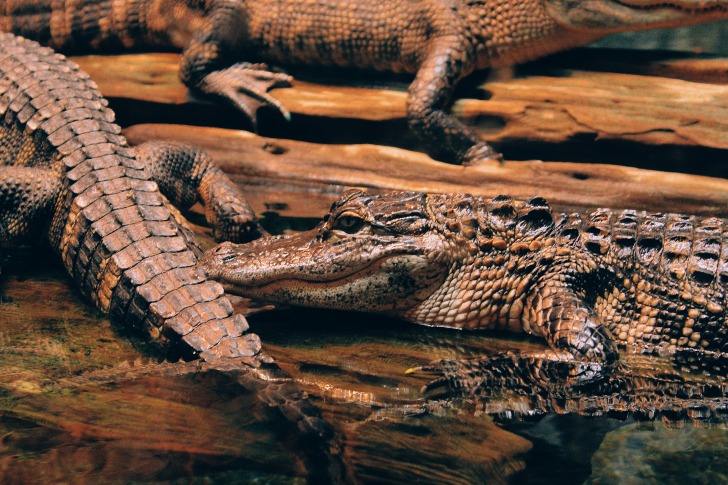
Alligators vs. Crocodiles
If you find the two reptiles confusing, you are not alone.
They both live in similar habitats and have almost identical body structures.
Alligators and crocodiles are different species in different families in the same order.
There are unique identifying features between the two reptiles.
Snout shape differs between the two
An alligator’s snout is broader than that of a crocodile and a bit flat at the front.
A crocodile has a narrower mouth that has sharp pointing.
Do you see some teeth when the animal closes its mouth?
If yes, it would be a crocodile.
An alligator’s upper jaw is wider than the lower one, making it possible to cover its teeth when it closes its mouth.
Behavior
Alligators are docile animals and will tend to get away from man.
However, crocodiles are aggressive and will stalk humans near the waters.
Where do you spot the reptile?
If you spot one of these animals in salty water, it is a crocodile.
Alligators prefer fresh or murky water and don’t have the necessary glands to exercise salt in their bodies.
5 Safety Tips for Swimming in Alligator-Infested Waters
The rule is not to swim in alligator-infested waters.
Alligators are apex predators, meaning they eat different animals than invertebrates, fish, birds, mammals, and reptiles.
Gators have excellent hunting skills; they capture their prey by biting and submerging the victim in water to drown them.
Observe the following while trending near water known to be infested by alligators.
Never approach an alligator
An alligator may read your approach to be a threat and become defensive.
The worst would be when the reptile thinks of you as easy prey.
Its bite can cause severe injury and can be fatal.
Put your dog on a leash
Your furry friend’s size is almost the same as some animals an alligator hunts.
Dog noises while playing and when swimming will attract a hunting gator.
These incidents of gators attacking dogs and humans falling victim while trying to save the pets.
Never go near a mama alligator nest
Female alligators, during breeding, build a nest on the banks where she lays their eggs.
She then covers the mound with vegetation and mud for incubation.
The mother stays nearby and controls the temperature of the nest using water.
The mother gator knows her eggs are a delicacy of many predators and guards the nest area against any intrusion.
Never let your small young ones swim in alligator-infested waters
Keep your loved young ones out of alligator-infested waters.
Their size is tempting gators as targets.
While young children swim, an alligator may intercept their splashes as a distress call about drowning a prey and attack.
Observe the warnings on display
Read any warning signs when visiting the river.
The signs help you to keep alert in highly infested spots.
Summary
St. Johns River is an ideal destination in all seasons.
In winter, you can see manatees in the springs; during warm weather, alligators are almost everywhere along the river.
The forest along the river is home to bears, and at the right time of the day, you catch a glimpse of one.
The ecosystem along St. Johns River is a natural marvel with plenty of fauna and flora to enjoy.
St. Johns River will also allow you to play in the waters, and you can hike along the trails for fun.
Frequently Asked Questions
How many people die every year due to alligator attacks?
Despite the large population of alligators in St. Johns River and other parts of Florida, alligator attacks are rare.
Many of the reported incidents result from human behavior toward reptiles.
Alligators prefer to keep peace with man and will walk away if you keep your distance.
In a period of 67 years (1948 – 2015), 383 alligator attacks were recorded, 257 incidents resulting in severe injuries, while 126 were minor attacks.
Cases leading to death in the past 43 years are a total of 24.
How are alligators beneficial to us?
Alligators play a significant role in the ecosystem.
The reptiles are apex predators and help to maintain balance within the food chain.
Alligator burrows provide a home for other water-borne creatures during dry periods.
Alligator meat is edible, and their skin makes leather products highly valued in the market.
Are alligators becoming a threat to humans?
The human and alligator population has been gradually increasing over the years.
Man is reclaiming land in wetlands where alligators inhabit, reducing their natural habitats.
Human encroachment on alligators’ natural homes leads to increased incidents of gators’ conflict with man.
Today, news travels fast worldwide, and many people have access to information.
The Internet has billions of users that can increase a news item’s magnitude.
The current generation of city dwellers also contributes to attacks due to a lack of knowledge and a sense of danger in the wild.
